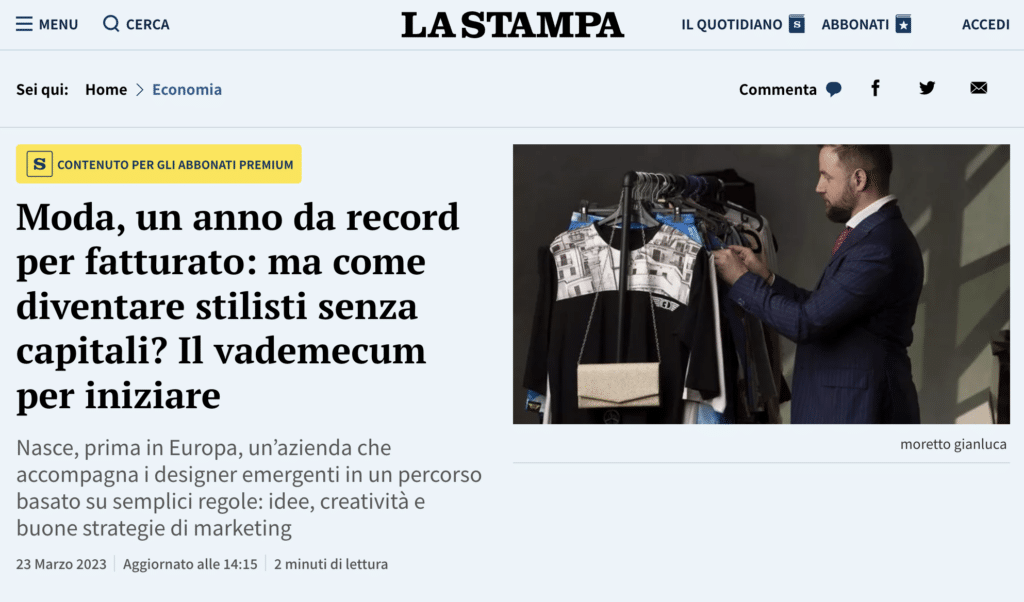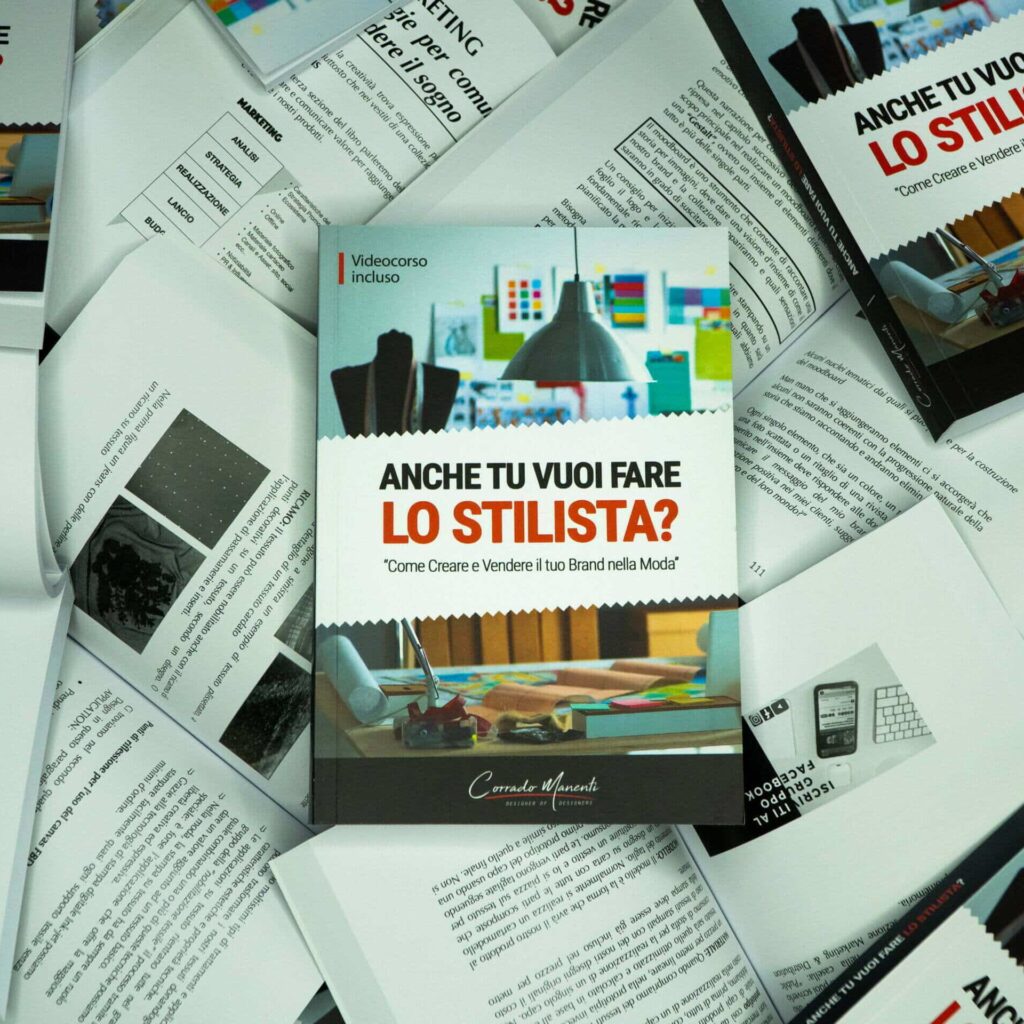Press Release: At School for Fashion and Design
An article came out in 'La Stampa' about us!
Text excerpted from the article to be consulted without abstention:
Fashion, a record year for turnover: but how to become a designer without capital? The vademecum to get started
A company is born, the first in Europe, that accompanies emerging designers on a path based on simple rules: ideas, creativity and good marketing strategies.
Here is the vademecum to follow to establish yourself in fashion and have a chance of success.
First rule, never get down, explains Corrado Manenti inventor of this original route.
Already a hundred or so companies have been established with an average turnover of 100,000 euro per collection... A record 2022, with a turnover close to one hundred billion euro.
The fashion industry runs fast and, despite the crisis, seems to show no signs of letting up.
Thanks above all to the big brands, prestigious signatures that export successfully around the world in the wake of Made in Italy. An important flow of money which, however, cannot and must not discourage those who have ideas and creativity and want to make them known in some way.
In short, can one enter the magical world of fashion without significant capital and using strict marketing strategies?
Corrado Manenti is convinced of this and has founded a company with which he accompanies up-and-coming designers along this path and gives them the chance to make themselves known to the general public.
Hence, a vademecum to follow in order to be successful:
I am convinced,' Manenti explains, 'that skill is an indispensable element, but on its own it is not enough. You need a, let's say, scientific method with which to approach it. Twelve simple rules to apply in your business. The first, perhaps the main one, concerns the target audience: fashion is a vast industry, so it is important to identify who your target audience will be. Understanding their needs, tastes, needs and expectations in advance is crucial. Just as it is crucial to look to the future and always try to be innovative. Provided, however, here is the second rule, that you remain consistent with your creativity and your brand. I have already trained a hundred or so young people who have created companies with an average turnover of 100,000 from their first collections on the market. In many cases, the method we have adopted is also the basis of companies that are already established on the international market
Consistency, therefore, another watchword for future designers.
With consistency in fact, collection after collection, one builds one's iconicity:
"It sounds like a word taken out of context," Manenti says, "but in reality it is central to giving an image of itself that improves over time but remains tied to firm principles. One of which is certainly the quality of the products you use. An aspect on which one must place the utmost attention, as on the people one works with. Reliable craftsmen and factories make the difference. Then finding the right balance between the quality thus achieved and the price measures the competitiveness of the brand. Attention is also paid to sustainability. An emerging high-end brand compared to the fast fashion industry has an obligation to be more virtuous'.
In addition to all this, there is of course marketing, which is no less important: 'This is an aspect that many people underestimate,' Manenti argues, 'but it is substance. A good marketing strategy is essential to promote products and brands. You have to create creative advertising campaigns and use social media to reach your target audience. But you cannot live on virtual alone.
Few emerging brands can call themselves digital natives. Fashion is still a world of physical products, of shops, boutiques and showrooms. It is much easier to be successful with a capillary distribution made up of a selection of shops and showrooms rather than focusing everything on online sales'.
Products, marketing strategies, balance between quality and price. But fashion is also, and above all, emotion, for those who make it and for those who receive it as consumers: 'A good designer,' says Manenti, 'cannot limit himself to exercises in style. Letting oneself be inspired by the great contemporary brands is certainly seductive, but it is only the tip of the iceberg of a much more complex marketing system.
If the big brands make most of their profits by selling lifestyle products such as cosmetics, accessories and perfumes, those who want to impose themselves on the market, as young designers, must, on the contrary, worry about selling clothes. And above all, he must never give up at the first difficulties.
Dreams must be cultivated intelligently and pursued passionately. A recipe that can launch even those who do not have large amounts of capital behind them into fashion. But only flair, imagination and ability'.

Do you also want to be a designer?
That's where you have to start:








































![What are Pre Collections? A quick guide not to get lost in the fashion calendar! [Podcast]](https://i.ytimg.com/vi/iPWRY--iQPg/hqdefault.jpg)






